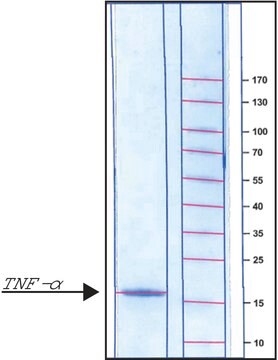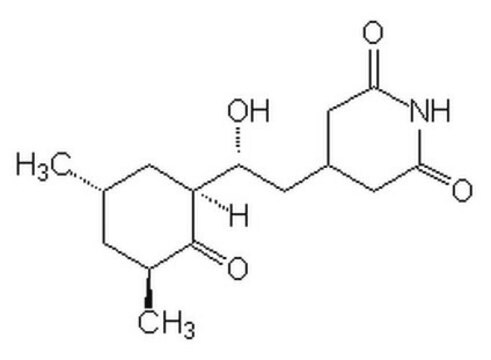129935
Actinomycin D, 7-Amino-
7-Aminoactinomycin D, like its parent molecule, actinomycin D, is a DNA intercalator and has antibacterial properties. Exhibits growth-inhibitory activity against certain leukemias and sarcomas.
Synonym(s):
Actinomycin D, 7-Amino-, 7-AAD, 7-Amino-AMD, 7-Aminoactinomycin C₁, 7-Aminodactinomycin
About This Item
Recommended Products
Quality Level
assay
≥85% (HPLC)
form
solid
manufacturer/tradename
Calbiochem®
storage condition
OK to freeze
desiccated (hygroscopic)
protect from light
color
red-purple
input
sample type intact cells
solubility
DMSO: 20 mg/mL
ethanol: 5 mg/mL
shipped in
ambient
storage temp.
−20°C
InChI
1S/C62H87N13O16/c1-26(2)42-59(85)74-21-17-19-36(74)57(83)70(13)24-38(76)72(15)48(28(5)6)61(87)89-32(11)44(55(81)66-42)68-53(79)34-23-35(63)30(9)51-46(34)65-47-40(41(64)50(78)31(10)52(47)91-51)54(80)69-45-33(12)90-62(88)49(29(7)8)73(16)39(77)25-71(14)58(84)37-20-18-22-75(37)60(86)43(27(3)4)67-56(45)82/h23,26-29,32-33,36-37,42-45,48-49H,17-22,24-25,63-64H2,1-16H3,(H,66,81)(H,67,82)(H,68,79)(H,69,80)
InChI key
YXHLJMWYDTXDHS-UHFFFAOYSA-N
General description
Biochem/physiol Actions
leukemias and sarcomas
Warning
Preparation Note
Reconstitution
Other Notes
Berg, R.J., et al. 1993. Carcinogenesis14, 103.
Chen, F.M. 1992. Biochemistry31, 6223.
Schmid, I., et al. 1992. Cytometry13, 204.
Toba, K., et al. 1992. Cytometry13, 60.
Sengupta, S.K., et al. 1975. J. Med. Chem.18, 1175.
Legal Information
signalword
Danger
hcodes
Hazard Classifications
Acute Tox. 2 Oral
Storage Class
6.1A - Combustible acute toxic Cat. 1 and 2 / very toxic hazardous materials
wgk_germany
WGK 3
Certificates of Analysis (COA)
Search for Certificates of Analysis (COA) by entering the products Lot/Batch Number. Lot and Batch Numbers can be found on a product’s label following the words ‘Lot’ or ‘Batch’.
Already Own This Product?
Find documentation for the products that you have recently purchased in the Document Library.
Customers Also Viewed
Our team of scientists has experience in all areas of research including Life Science, Material Science, Chemical Synthesis, Chromatography, Analytical and many others.
Contact Technical Service










